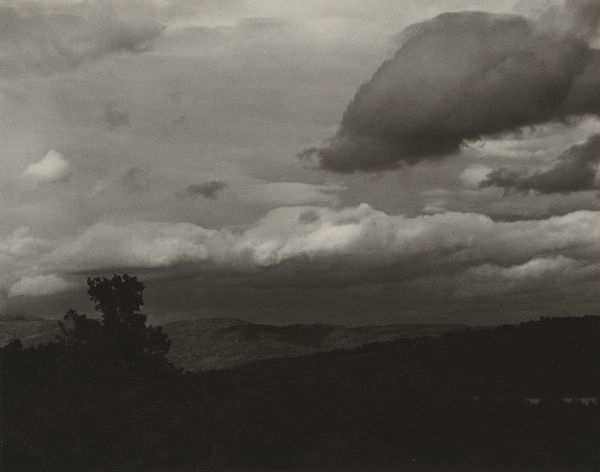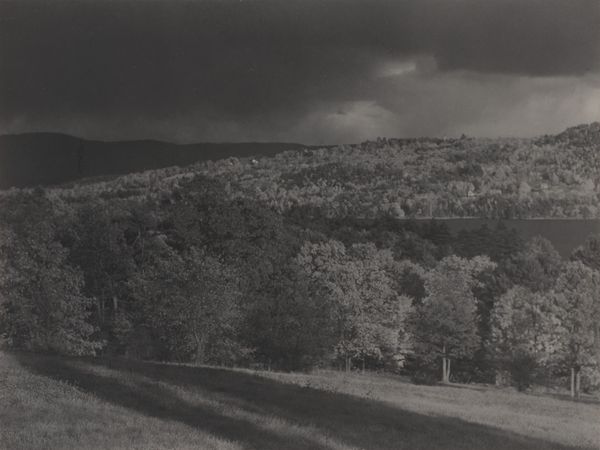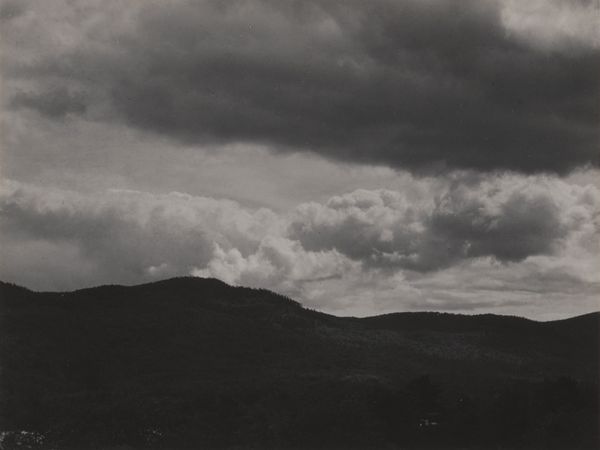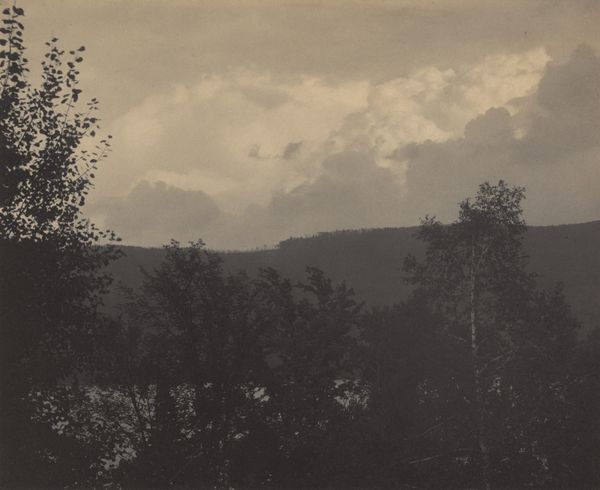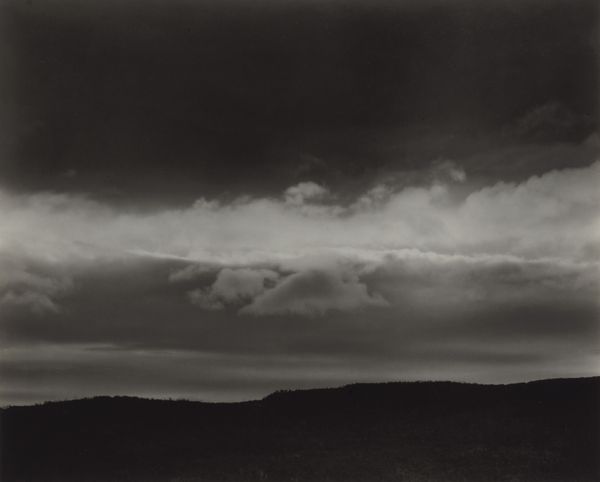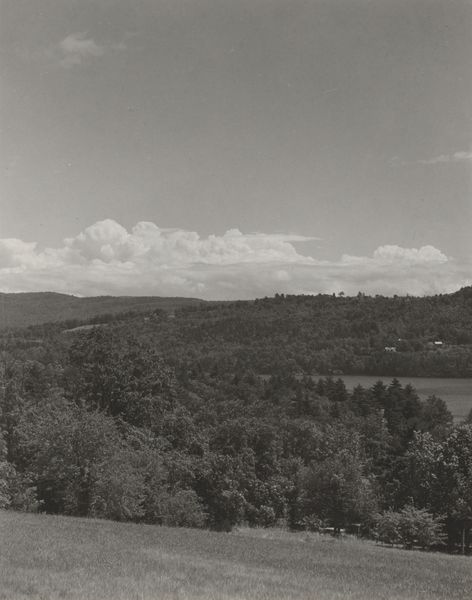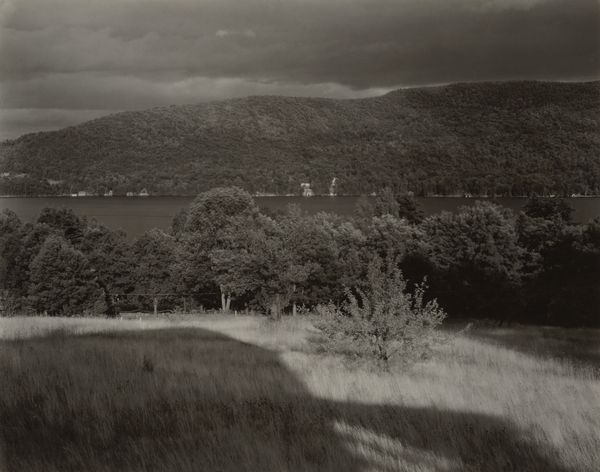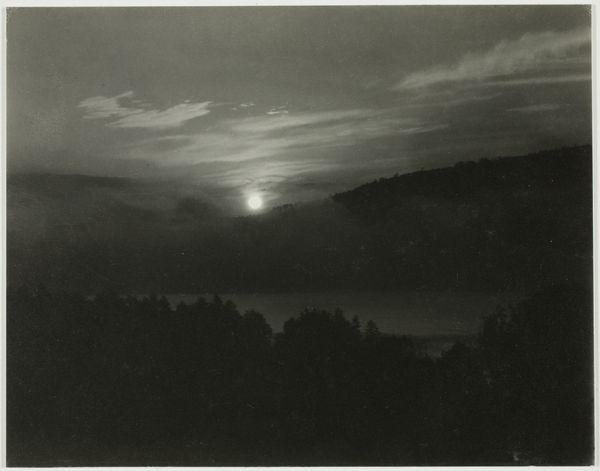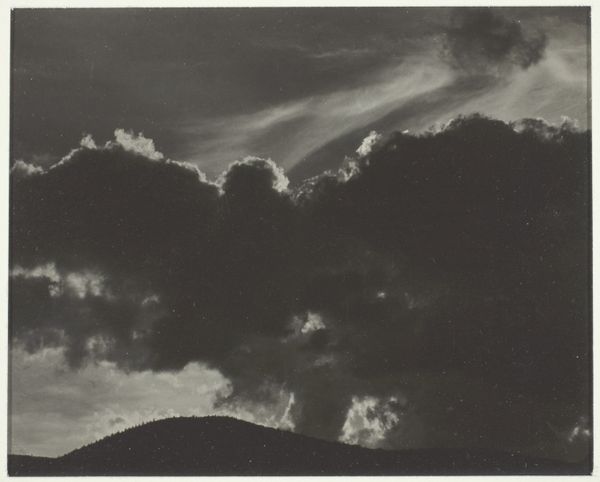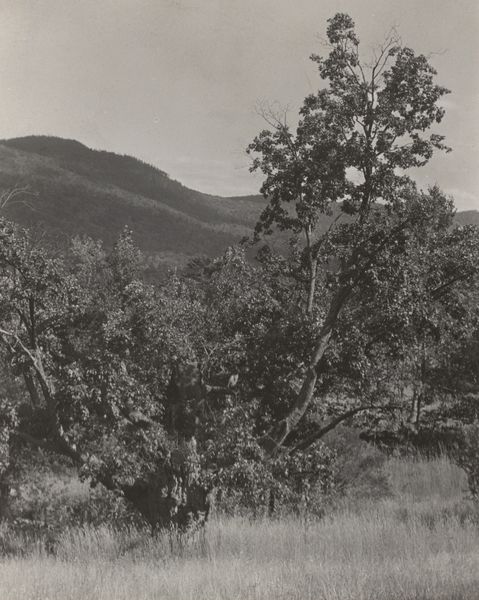
Dimensions: sheet (trimmed to image): 11.6 × 9.1 cm (4 9/16 × 3 9/16 in.) mount: 34.2 × 27.6 cm (13 7/16 × 10 7/8 in.)
Copyright: National Gallery of Art: CC0 1.0
Curator: Let's turn our attention to this serene landscape photograph entitled "Rainbow," taken in 1920 by Alfred Stieglitz. What's your initial take on it? Editor: The composition strikes me immediately. The dominant diagonal of the "rainbow," almost more like a shaft of light, cleaves the image. The gradation of tones, particularly in the sky, creates a palpable sense of depth. Curator: Stieglitz was a major force in advocating for photography as a fine art. In his landscapes, especially, he sought to elevate photography to the level of painting through careful composition and printing techniques. "Rainbow," realized as a gelatin silver print, encapsulates that ambition. Editor: It is also clearly tonal and, dare I say it, moody. While it lacks the chromatic brilliance suggested by its title, the grayscale palette amplifies the atmospheric effect. The eye is drawn upward from the dark treeline to the illuminated sky. Curator: Consider the socio-political context too. During the early 20th century, debates raged about photography’s status as art. Figures like Stieglitz worked tirelessly through exhibitions and publications to legitimize photography, imbuing images with a romantic and almost spiritual aura to suggest profound emotional experience, very much in keeping with that moment’s artistic trends. Editor: Indeed, that romantic leaning manifests in the almost ethereal quality of light and shadow, reinforcing that diagonal as not merely a structural element, but as a focal point through which all the romantic sentiments condense and find expression. It feels charged, this stark light and dark division. Curator: What I find most compelling is the ambiguity, or perhaps better understood as the range of experiences presented, in rendering a seemingly straightforward subject, like a landscape or indeed, a rainbow. Stieglitz infuses it with cultural meaning and historical weight that makes it far more significant than merely documentation. It acts as an exploration of light itself. Editor: I am also moved by the way it draws a viewer’s focus to light’s very capacity for transformation. The rainbow itself feels both present, through implied form and the symbolic, and is allusive: like our perception of rainbows it also alludes to larger concepts like illusion and transience. Overall, it's hard to not be captured by this dynamic between form and emotion, light, and subject, to not also reflect a bit more deeply about their presence or fleeting nature. Curator: It encourages us to see beyond the surface, connecting with something larger than ourselves, both through visual form and historical context. Editor: Exactly, a harmonious dialogue that amplifies both the form and impact this photograph evokes and still presents to viewers today.
Comments
No comments
Be the first to comment and join the conversation on the ultimate creative platform.



